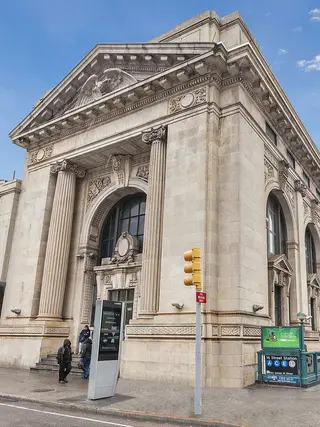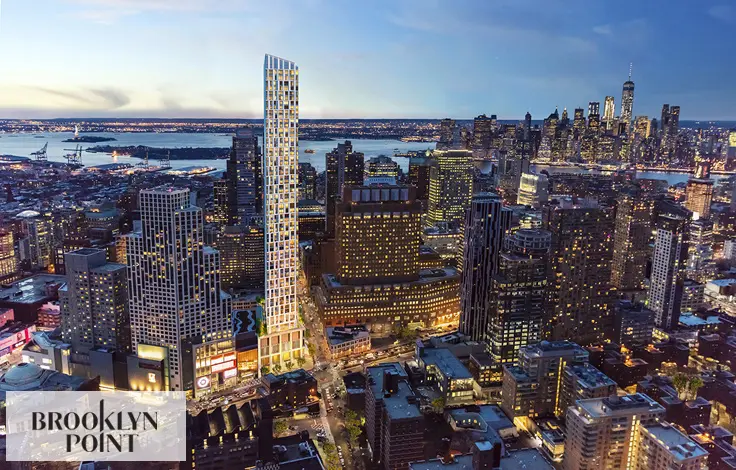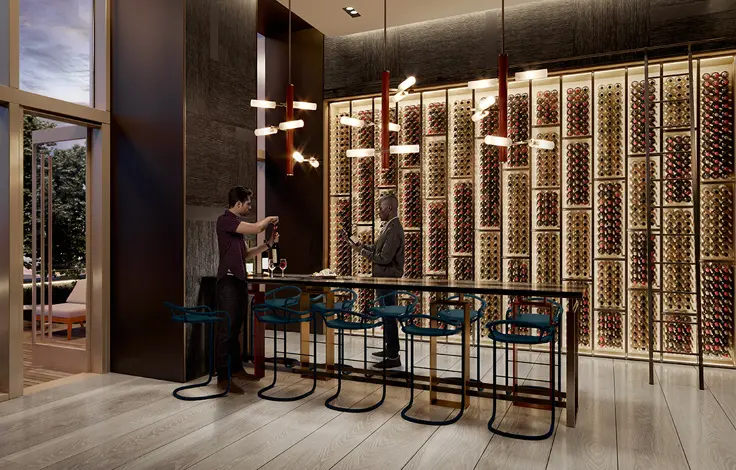 Carter Horsley
Carter HorsleyDec 23, 2011
Carter's Review
In the old days, banks built their own, small, but very impressive bank buildings all over town rather than renting some prosaic ground floor corner space in apartment buildings. Many of their old, ornate bank buildings have been converted to retail uses or demolished, but a few remain.
This former New York County Bank Building was built in 1907 and converted to 11 residential condominiums and 12,000-square feet of retail space by Richard Fiore and Laura Bohn in 1999 and the architect for the conversion was John Reimnitz. The conversion added a two-story penthouse with a fireplace.
The very impressive and ornate, limestone-clad building was designated an official New York City landmark in 1988.
The bank ran into financial troubles in 1902 but four years late had recovered enough to commission DeLemos & Cordes to design a building for the southwest corner of Eighth Avenue and 14th Street, directly across the street from the New York Savings Bank on the northwest corner.
The new bank's design was far more impressive than the savings bank building, which has a green dome.
DeLemos & Cordes firm was responsible for the magnificent Siegel-Cooper Dry Goods Store and the Adams Dry Goods Store on 6th Avenue, and for the beautiful new Macy's Department Store on 34th Street. Rudolph L. Daus, a graduate of the Paris Ecole des Beaux-Arts, was given the project.
Daus produced a, neo-classical temple with Beaux-Arts touches such as an eagle in almost full relief vigilantly surveying the cityscape from its perch in the pediment above the entrance flanked by large Corinthian columns. On 14th Street, Corinthian pilasters frame each arched window ornamented with caduceuses, the symbol of the medical profession but also a reference to Mercury, the god of commerce.
The A.I.A. Guide to New York City remarked that the two bank buildings are "a rare occurrence for this city; a pair of classically inspired sentinels guarding the western corridor of 14th Street" at the nexus of Greenwich Village and Chelsea.
In 1921, the New York County National Bank was taken over by the Chatham and Phoenix National Bank, which was absorbed in the 1930s by Manufacturers Trust Company, that late was renamed Manufacturers Hanover Trust in the 1960s. In 1994. that bank merged with Chemical Bank. Soon thereafter, however, the bank sat empty and was used for a while as a theater until 1999 when the main banking space was converted into a men's spa and 11 apartments were created.
The building is also known as 77 Eighth Avenue.

- Condo built in 1907
- Converted in 1999
- Located in West Village
- 11 total apartments 11 total apartments
- 10 recent sales ($900K to $4.9M)
- Doorman
- Pets Allowed






 6sqft delivers the latest on real estate, architecture, and design, straight from New York City.
6sqft delivers the latest on real estate, architecture, and design, straight from New York City.
